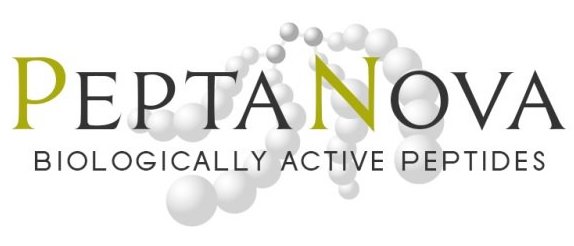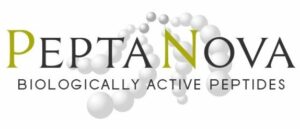Neuropeptide W-30 (Human)
NPW30 (Human), hL8C
4403-v 0.5 mg | 215.00 EUR
Trp – Tyr – Lys – His – Val – Ala – Ser – Pro – Arg – Tyr – His – Thr – Val – Gly – Arg – Ala – Ala – Gly – Leu – Leu – Met – Gly – Leu – Arg – Arg – Ser – Pro – Tyr – Leu – Trp
| (M.W. 3543.1) | C165H249N49O37S |
Synthetic Product
The purity is guaranteed to be higher than 99% by HPLC
Food Intake-Regulating Peptide / GPR7/GPR8 Ligand
A method based on „reverse pharmacology“ has been successfully applied to identification of novel ligands for the orphan receptors. Recently, human GPR7 and GPR8, having the sequence similarity to both opioid and somatostatin receptors, became target of interest. Actually, three groups have discovered the identical ligands to GPR7 and GPR8, which were designated either "neuropeptide W (NPW)" or "L8C" [J. Biol. Chem., 277, 35826 (2002), J. Biol. Chem., 278, 776 (2003), and Proc. Natl. Acad. Sci. U.S.A., 100, 6251 (2003)] (in this brief introduction of Code 4403-v and Code 4404-v, "NPW" is used as the abbreviation of the newly discovered peptide).
Based on the isolated peptide from porcine hypothalamus, cDNA sequence of human and rat NPW were predicted. Both have been deduced to be a 30- or 23-residue peptide [NPW30 or NPW23 (corresponding to the amino-terminal 23 residues of NPW30)] because of the existence of the potential double basic cleaving sites in the precursor. Chemically synthesized NPW30 (and also NPW23) showed:
- binding activity to both GPR7 and GPR8 at nM or even lower concentrations;
- inhibitory activity of cAMP accumulation induced by forskolin;
- stimulatory activity of prolactin release; and
- stimulation of aggregation of melanosomes in melanophres.
In addition to these, some roles in food intake regulation[Endocrinology, in press] are suggested to be in line with the predominant localization of its mRNA in the brain. NPW should serve as an essential tool for understanding biological events originating from CNS activation or inhibition.
References:
- Y. Shimomura, M. Harada, M. Goto, T. Sugo, Y. Matsumoto, M. Abe, T. Watanabe, T. Asami, C. Kitada, M. Mori, H. Onda and M. Fujino, J. Biol. Chem, 277, 35826 (2002) (Original; NPW)
- S. Brezillon, V. Lannoy, J.-D. Franssen, E. Le Poul, V. Dupriez, J. Lucchetti, M. Detheux and M. Parmentier, J. Biol. Chem, 278, 776 (2003) (Original; hL8C)
- H. Tanaka, T. Yoshida, N. Miyamoto, T. Motoike, H. Kurosu, K. Shibata, A. Yamanaka, S.C. Williams, J.A. Richardson, N. Tsujino, M.G. Garry, M.R. Lerner, D.S. King, B.F. O’Dowd, T. Sakurai and M. Yanagisawa, Proc. Natl. Acad. Sci. U.S.A, 100, 6251 (2003) (cDNA & Pharmacol.)

